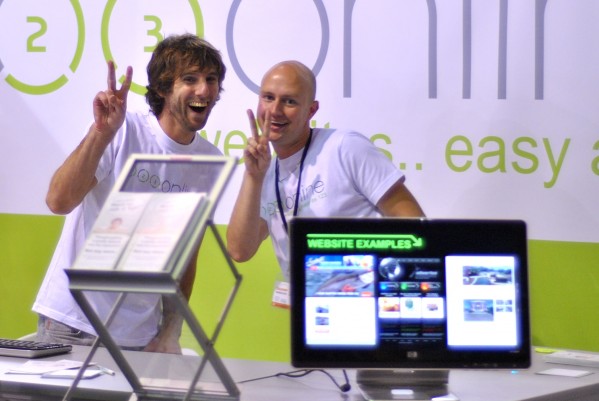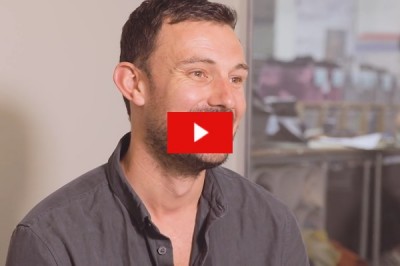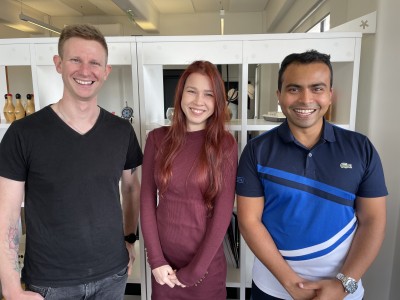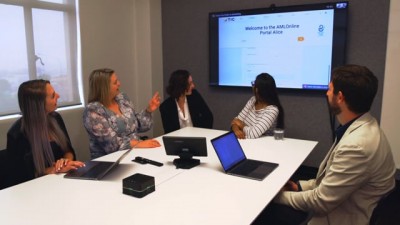


10 Reflections on My First 10 Years in Business
02 October, 2017
Company UpdatesIn September 2007, my (still) best friend, John McLean and I decided to go into business together. I was 21 years old and John was 24. Our plan was to design a ton of quality, affordable websites for small businesses, make recurring revenue from the web hosting and retire within 4 years to live out the rest of our days on a beach somewhere. How hard could it be?
Spoiler alert: we're still not at the beach. We grew our first business, 123 Online, to 18 employees and designed over 2,000 websites. Then we showed ourselves for the inexperienced kids we were, got caught in a changing market and nearly had to shut our doors. In a backs-against-the-wall moment, we made a pivot into CRM consulting with our new venture, LavaBox, and things have been trending up since then.
After 10 years, we're still standing, still learning and still loving the work, the people we do it with and the clients we do it for. I felt it was a good time to reflect and share what this experience has taught me so far.

Choose your partner wisely: find the Yin to your Yang
If you have the same talents and traits as your business partner, you'll both have strong opinions about your areas of competence, while both neglecting your areas of ignorance. From the start, John was the brains and I was the mouth. He understood the tech and the product and I knew how to create a value proposition and customer experience around it.
We've been able to develop mutual trust in each other's abilities, and collaborate by coming at situations from different perspectives drawn from our polar-opposite personalities. The result has been a balanced and harmonious working relationship. I consider our greatest success the fact we're still as good friends now as we were then.
Know your cost per acquisition: create predictable lead flow
We spent our first $5,000 getting a killer brand designed, made the best website we could and invested all the money we made in advertising to drive people to it. Knowing our cost per lead and lead to sale ratios were key in planning and investing our growth. They were also the first sign of changing market conditions. When we started out, a website lead was $15. We knew we were in big trouble when it climbed over $90 years later.
If you want it done right: build a system
After we began taking on employees, we realised that they weren't founders. They didn't have the natural best-practices that we had. So instead of looking over their shoulder every 5 mins or giving them a training session and leaving them to it, we decided to take what we did well and make a CRM system that drove that behavior. Building our business on the Salesforce CRM platform allowed us to deliver excellence at scale, while rapidly experimenting and improving how we did things.
We didn't know it at the time, but our decision to begin building our business systems on the Salesforce platform would lead us into doing this work for other aspirational businesses with LavaBox 7 years later.
Keep an eye on the horizon: make sure you catch the next big wave
I still consider our largest mistake to be missing the online marketing wave of 2010. We were producing 40+ websites a month, and had become obsessed with making our product and delivery perfect. We got our horse blinkers on and completely missed the obvious fact that our customers all needed to drive traffic, leads and sales from their websites. By the time we moved into this space in 2012, it was like trying to paddle after a wave that had already broken.
No matter how great the product you're building is, remember that products come and go but your market will still be there with problems that need to be solved, so keep listening to them.
Humility in the tough times: fail well
Our 123 Online team were like family to John and I. When the writing was on the wall that we had to restructure and move in a new direction, breaking the news to the gang still remains the hardest moment of my career. It's easy to be patient, generous and compassionate when times are good, but it's how we treat people in the tough times that speak to our development as humans.
We gave our team 3 months notice, helped them write and design amazing CVs, wrote letters of recommendation, leveraged our network and luckily every one of them landed on their feet. On our last day, we all went out for dinner, swapped stories and memories and ended the chapter in a way that honored their contribution and commitment.
Then we re-signed the lease on our premises and got to work planning our new venture.
Look before you leap: validate the market
Before making our move into the CRM consulting space, I read one of the most useful business books I've come across: "If you build it, will they come?" by Rob Adams. I firmly believe that your greatest competitive advantage is a superior understanding of your customer. Before starting a new venture, or adding an additional product or service to your offering, there is no substitute for going through a rigorous market validation process. Mapping your customers' pain points against the value of your proposed solution allows you to nail the product / market fit and create an offering and value proposition that resonates. Or, save a ton of time and money if the market doesn't give you the feedback you were hoping for.
The face-to-face interviews we conducted ahead of our LavaBox launch with prospective customers, strategic partners and non-competitive industry players were key to us hitting the ground with an offering our market wanted and were willing to pay for.
If you wouldn't take 1,000 customers like this one, why take 1? : know your ideal customer
Often, you can see a bad-fit customer coming a mile away, yet against your better judgement you take them on, and things go sideways in due course. Your reputation and P&L suffers, it takes a toll on your team and the customer doesn't get the value they were expecting. I'll admit it's a lesson I've had to relearn over the years, but when you get that "is this really a good idea?" feeling, I've found a good question to ask is: If I took on 1,000 customers like this one, would I:
a) Still be in business or
b) Still want to be in business
If the answer is no on either count, why take this one?
Give your team the full story: radical transparency
We made a decision early on, that if our team were going to contribute to the business's success, they needed to understand our plans, pains and progress. So every year, we present our full business plan including key goals across our product lines, our financial targets (including profit) and our community initiatives. Then each quarter, we hold up our progress against our business plan, celebrate our wins and acknowledge our setbacks. And every Tuesday, we run through the week's strategic achievements and challenges, how we're tracking financially and a discussion point that gets us thinking.
Sharing this level of information may feel uncomfortable at first, and I'll admit this approach may not work in all industries. All I can say is we've found this open, transparent approach has enabled our team to join the dots between their role and the larger objectives of the business. They contribute more effectively as a result.
Create a beacon for the right people to find you: don't sacrifice on culture
As with many high-skill industries, the Salesforce consulting space has a talent drought. This only further amplifies the temptation to hire people who know how to do the work, but don't "fit the vibe." We've always had a dynamic culture that resembled more of a creative agency than a corporate IT consultancy.
Although it's meant we've had to moderate our pace of growth, I'm pleased we've held the line on this. Over time, we've noticed that the right kind of culture fits are considering us as a viable alternative to the larger consultancies with more prestigious clients because of the environment we've created.
Play the long game: reputation is everything
Reputation is the end result of consistently exceeding your customers' expectations. Being short-sighted will leave your reputation in the dust. It's better to make a loss on a project than not deliver. It's better to pay good people well and develop their talents than watch them leave. It's better to invest early and often in the underlying people, systems, products and technology that make your offering great.
A final thought: why am I in business?
When I started out, I thought I knew it all. I was going to go out there, take on the world and win. Preferably within 4 years because those margaritas waiting for me at my beach retirement destination weren't going to drink themselves.
I feel a lot less sure of myself now. It's clear to me what an expansive, ever-changing and multi-disciplinary world business encompasses. What I know is always far less than what I need to know. But I do take confidence looking back at the jump I've made in my competence over the last decade. I figure if I can take another jump over the next decade, and maybe another jump or two after that, whenever I'm finally ready to move to the beach I'll know a few more things worth sharing.
Written by Justin Lanigan, LavaBox Managing Director in October, 2017
Related articles
Watch Now: Client Success - Deadly Ponies
29 November, 2016
Company UpdatesDeadly Ponies needed a help desk system that delivered a premium customer service experience that matched their premium product. We developed an intuitive architecture on Salesforce's Service Cloud platform that is delighting both staff and customers.
MoreNew Arrivals: Welcome Rob, Yana and Denver
07 December, 2021
Company UpdatesIn a year that has seen unprecedented IT skills shortages, it’s gratifying to see the LavaBox team and culture continue to grow and thrive.
MoreStart Up Success: The Tic Co Leverages Salesforce to Scale & Innovate
01 November, 2020
Company UpdatesLavaBox worked alongside The Tic Co to implement an operational backbone that streamlined and automated their end-to-end delivery process.
MoreLevel 2 - 224 Symonds St
Eden Terrace
Auckland 1024







